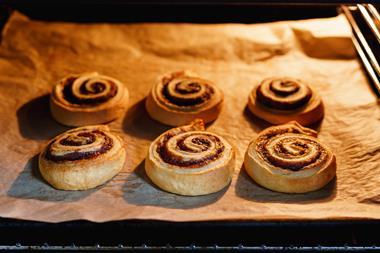On a significant day for Gerhard Jenne, he takes a fond trip down memory lane to reveal to his old stomping ground
I’m penning this blog on quite a significant day. I tell a lie — these days it’s less of a penning, more of a hammering of words into being. This doesn’t make the day any less memorable — it’s still a significant one for me!
Precisely 21 years ago at around 7am, I clocked out after a night shift at Justin de Blank’s Hygienic Bakery in Knightsbridge to embark on my own business venture. At this moment, you might actually wonder why it was called a ‘Hygienic Bakery’, rather than why it was such an important date for me. The bakery actually had some listed brick-built ovens in the basement that used to be fired with coal. No matter how hard the bakers swung a cloth attached to a long pole around the baking chamber to rid some of the coal dust up the flue, some always remained, making for a gritty experience. Then, after the First World War, the ovens were converted to gas-fired. This made the breads instantly cleaner, and the bakery was awarded the certificate of ‘Hygienic Bakery’. Sixty years later, Justin de Blank revived them and was running his shop from the same spot, incorporating this title into its name.
When I first saw the yellow shop front with the intriguing name, printed in large red letters on the awning, I was immediately drawn to it. As it happens, there was a two-deck Tom Chandley upstairs, but downstairs harboured the real gems: two vast brick ovens at either end of the bakehouse. While one oven was full of bread, the other could be emptied and prepared for the next bake. For the bricks to reach the right temperature, a huge gas flame, worthy of a rocket engine, was fired into the chamber for about 20 minutes. Then the breads were skilfully placed in the oven, using long peels for baguettes and shorter ones for cottage loaves. All the while steam was pumped into the chamber. This steam came from a huge apparatus, probably installed around 1920. It was a maze of pipes and dials; one felt it could explode at any moment. An equally-old sprawlingly eye-browed chap called Hancock was the only one who understood their huffing and puffing windings. Thankfully, he serviced it on occasion and made sure they did their trick and gave the breads a chance to rise before the dry heat of the ovens finished them on their falling temperature.
These ovens weren’t just exceptional on account of their firing method: they actually had their own royal celebrity moment when Lady Sarah Armstrong Jones, daughter of Princess Margaret, came to sketch them in fine pencil one early morning. Then there was the day when someone called Julian Metcalfe approached us to bake some bloomer-shaped loaves for a new concept he was planning. He wasn’t looking for square sandwich tins, common in every made-to-order sandwich shop in town. He wanted bloomer-shaped loaves to differentiate himself for his new, ready-to-go concept. And thus, within a few weeks, we not only baked massive white bloomers with a lovely caramelised crust, but had developed sun-dried tomato and walnut breads to go with the equally new fillings that were offered in a shop called Pret A Manger. Lunches were never going to be the same again.
I left in 1993 to set up Konditor & Cook. About two years later, Justin de Blank’s Hygienic Bakery closed to be reborn as ‘Baker & Spice’, a place where Yottam Ottolenghi and Dan Lepard forged their early careers. These days, the back of the shop is a swanky residential development and the shop itself a cosmetics boutique. The ovens, on account of their listing, are back in a slumber. If ever there was going to be a map or a blue plaque featuring magnificent milestones in baking history, No. 46 Walton Street, SW3 should definitely be awarded one. And now I can get on with celebrating my birthday!
konditorandcook.com


























No comments yet